In new construction homes, it’s pretty common for insulation contractors to miss hidden air leaks. In our 10 Hidden Air Leaks in New Construction Homes, we detail the top locations for hidden air leaks. One location is cantilevered floors.
Insulation Institute Blog
Posts By: Stacy Fitzgerald-Redd
3E Estimator Makes Calculating Savings Easy
A new tool that leverages the capabilities of NAIMA’s 3E Plus pipe insulation thickness calculator for commercial and industrial facilities is now available. Within just a few minutes, the 3E Estimator can give users a ballpark estimate of the energy and emissions savings by adding insulation to the piping in an industrial facility.
Details »3 Energy Efficiency Stories That Should Be on Your Radar
There’s no shortage of news stories proliferating within building and energy efficiency circles. It can be overwhelming to keep up with developments, so this week, we focus on three stories that we think should be on your radar.
Details »As Use of 25C Lags, Contractor Campaign Underway
According to new data released by the U.S. Treasury Department, for the 2023 tax year, more than 3.34 million U.S. taxpayers claimed at least one of the home energy efficiency tax credits made available in the Inflation Reduction Act (IRA). In all, more than $8 billion in residential clean energy and home energy efficiency credits were claimed against 2023 federal income taxes.
Details »Recycled Content Use Tops 3 Billion Pounds
NAIMA recently announced the result of its annual recycled content survey, which reports its members’ use of recycled materials. In 2023, NAIMA members in the United States and Canada used more than 3 billion pounds of recycled glass and slag in the production of residential, commercial, industrial, and air-handling thermal and acoustical insulation.
Details »The Urgent Need to Cut Energy Burden for Families
Insulation is one of the best ways to reduce home energy costs, with a national opportunity to save 15 to 45 percent on costs, according to ICF’s Insulation Opportunity Study. With the unprecedented heat making energy costs increasingly unaffordable for all Americans but particularly low-income Americans, this cannot be overstated. A new report from the National Energy Assistance Directors Association (NEADA) and the Center for Energy Poverty and Climate (CEPC) underscores the need to rapidly expand energy assistance programs and weatherization activities to reduce the cost burden to these communities.

New: Report on Thermal Performance of Pipe Insulation
NAIMA has released a new report detailing the thermal conductivity of fiberglass, mineral wool, and aerogel pipe insulation products under high process temperatures. A specific test, the ASTM C335, is prescribed for conducting such testing, which must be completed by an accredited testing facility.
Details »State of the Nation’s Housing Report 2024
The Joint Center for Housing Studies (JCHS) at Harvard University recently released The State of the Nation’s Housing 2024 report. This year’s report details some significant challenges confronting the U.S. residential housing market. These include increasing housing costs, record cost burdens for homeowners and low for-sale inventory, which has prompted buyers to seek new construction homes, however unaffordable.
Details »Government-Backed Mortgages to Get Efficiency Boost
Yesterday, the U.S. Department of Housing and Urban Development (HUD) and the U.S. Department of Agriculture (USDA) announced a final rule updating the energy code requirements for HUD and USDA new home mortgages. All new construction homes purchased with these federal mortgages must now comply with the 2021 or the 2024 International Energy Conservation Code (IECC). While the final rule was announced today, enforcement of the rule will not come for 18 months. Currently, the rules require compliance with the 2009 IECC. This new requirement will increase the energy efficiency of new homes by more than 30 percent.
Details »How the IRA Can Make Resilience Affordable
With the cost of homeownership skyrocketing and extreme weather on the rise, it’s increasingly important to know if your home is financially and physically resilient.
Housing affordability is a nationwide concern for homeowners. Rising costs across insurance, taxes, and utilities are creating serious financial strain. These rising costs are alarming enough, but when combined with the increasing threat of severe weather events, like the recent snowstorm in Portland, Oregon, that left 132,000 people without power for over a week, risks are leading homeowners to question if they’re properly prepared.
Details »








